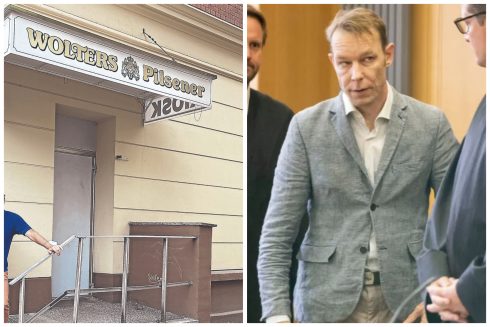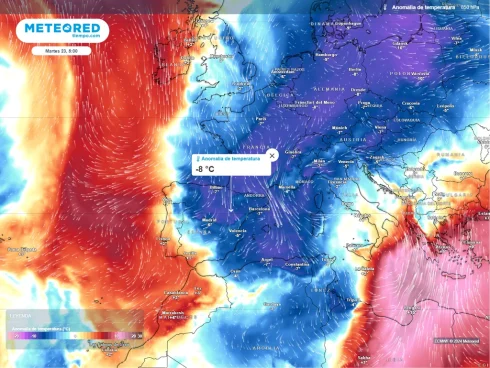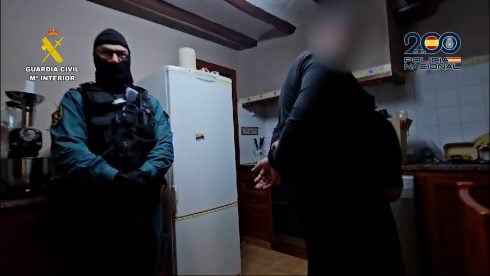IT is billed as the ‘most primitive hotel’ in Spain.
And with the generator packed up, the wind whistling under the door and the open fire the only source of cooking, it must certainly come close.
I had been offered a weekend to discover the charms of the so-called Sierra Morena Mountain Refuge, which sits high in the Sierra de Aracena, a few clicks from the Extremadura border.
But nobody told me – an Essex girl, used to regular home comforts – that the place would be freezing and the creature comforts practically nil.
My weekend breaks are normally spent on the beach or in a comfortable city hotel, so it is fair to say that I headed off with a certain degree of trepidation.
Luckily my friend Wendy – who grew up on camping holidays – was coming along for the ride. And she soon got me in the spirit for something a little different.
The beautifully restored farmhouse, which sits in its own valley with some of the most amazing views in Andalucia, certainly looked the part.
Built with sustainable materials, its wooden furniture and fire place certainly gave off a welcoming feel.
But, while I was looking forward to a hot cup of tea – or something stronger – our host, owner Javier Aguirrebengoa decided we needed a proper tour of the grounds.
So we were soon being taken on a forced march around the soggy nearby woodland, getting an in-depth lecture on this plant and that plant, etc, etc.
Despite the light starting to dim, our host’s enthusiasm was unrelenting, as he pulled up nearly every plant we passed to tell us about it’s history and why it was vital to the landscape.
I couldn’t help thinking this wasn’t the most sustainable way of caring for the land but I trusted he knew what he was doing.
Once I had turned almost blue and could no longer feel my feet, I politely told Javier I was heading back to marinade the meat I had picked up at Mercadona the night before.
It was nearing 8pm and I feared the combination of cold and hunger would push me over the edge. I was all set to jump in the car and head home… until I realised we had left it half an hour away up a dirt track!
Thankfully Javier took the hint and when we got back to the farmhouse his friend Antonio had got a roaring fire going in the grate.
It warmed me cockles, as they say, and I was soon relaxing in front of the fire, while Wendy chopped an onion using a head torch – the generator had packed up meaning there were no lights.
Once fed and less blue, I began to appreciate where I was and what Javier had achieved in this isolated corner of Huelva province.
The former estate agent had found the spot, by accident, three years ago, when he and his wife had been on a day out from Sevilla, where they live.
Taking a hike in the little known Sierra de Tentudia they both had some kind of awakening as the current recession had really started to bite.
With he and his wife both forced out of work due to the crisis, they were both looking for a new meaning to their lives.
“I started to re-evaluate what was important to me and my family,” Javier told me, over a hot cup of soup.
“Seeing how people lived out here in the sticks, their traditions and how they lived off the land inspired me to start this project.”
His philosophy is endearingly simple. Respect the land, learn from it and uphold ancient and sustainable rural traditions.
“I don’t think we can live without certain technology, but a better understanding of our environment and old traditions means we can rely on it less,” he explains.
All revenue made from the recently set up project goes towards local agricultural projects and educating others about sustainable living.
The refuge itself has been beautifully restored. All the beds are hand-made using locally sourced wood, and all features, even down to the style of hand basin, are designed to be in keeping with the local mountain vernacular.
But that’s not to say he hasn’t tried to make the refuge comfortable. And there are some creature comforts, such as a giant pull-down screen installed to watch movies…when the generator is working of course.
There is a big library of books and films, the vast majority linked to the environment, and visitors are encouraged to learn (and practice) self-sufficiency during their stay.
It’s no surprise that visitors are also encouraged to walk to the refuge instead of driving. But unless you had a tractor, or a robust 4×4 you wouldn’t make it anyway as roads are non-existent the whole way up.
I crawled into bed early with all my clothes on, shivering and wishing I had brought some thermal underwear.
I did at least sleep well until we were rudely awoken at 6.30am by Javier and Antonio having a heated discussion about solar energy.
‘Heated’ somehow seemed to be the wrong word though, and when I opened the shutters I couldn’t believe my eyes. It was completely white and we were covered in a foot of snow.
It was like Narnia and I was waiting for the White Witch to turn me into an ice statue.
She never showed, so I got dressed and sat by the fire with Javier who was so overwhelmed by the snow he couldn’t wait to get outside.
I declined, prefering to dream of all inclusive holidays, and chat to Antonio who was making toast over the fire.
After ‘breakfast’ we set off to visit the caves in nearby Fuentes de Leon, where a recent discovery of Roman artefacts had made it popular.
The caves themselves are nothing spectacular, but the story behind them and what they have found out about the Romans that lived there is pretty impressive.
For example, they discovered that when someone died they ate them due to lack of other food!
On our way back to the refuge, Javier took us to visit a retired farmer, Francisco, who spends most of his day looking after his small herd of goats, one of which was about to give birth.
He had dried chillies and tomatoes hanging from his wall and laid out a nice spread of cured pork and red wine for us.
He has lived in the area his whole life and was practically self-sufficient.
Javier explained how he had learnt a lot from Francisco and you could see they had built up a strong friendship through their mutual love of the area.
All in all, the refuge is a totally unique experience and Javier’s passion for the project is admirable.
But I wouldn’t recommend going in winter, unless you are a die-hard ‘outdoors’ person.
In the summer I imagine this place is idyllic and it would be much easier to embrace the self-sufficiency lifestyle.
And with a group of friends, good food and wine, there is no doubt that this could be the ultimate holiday retreat.
Either way, it is a week in the Canaries for me next winter.
For more information visit: www.sierramountainrefuge.com.









Surely this is Paul Whitelock’s house with such an advanced heating system like that?